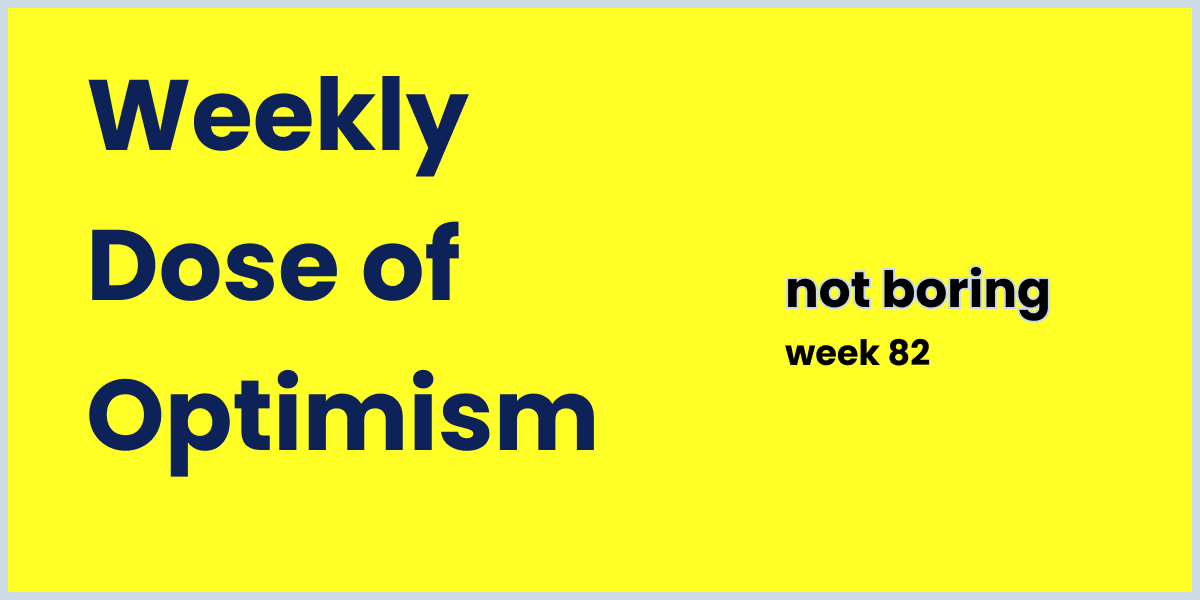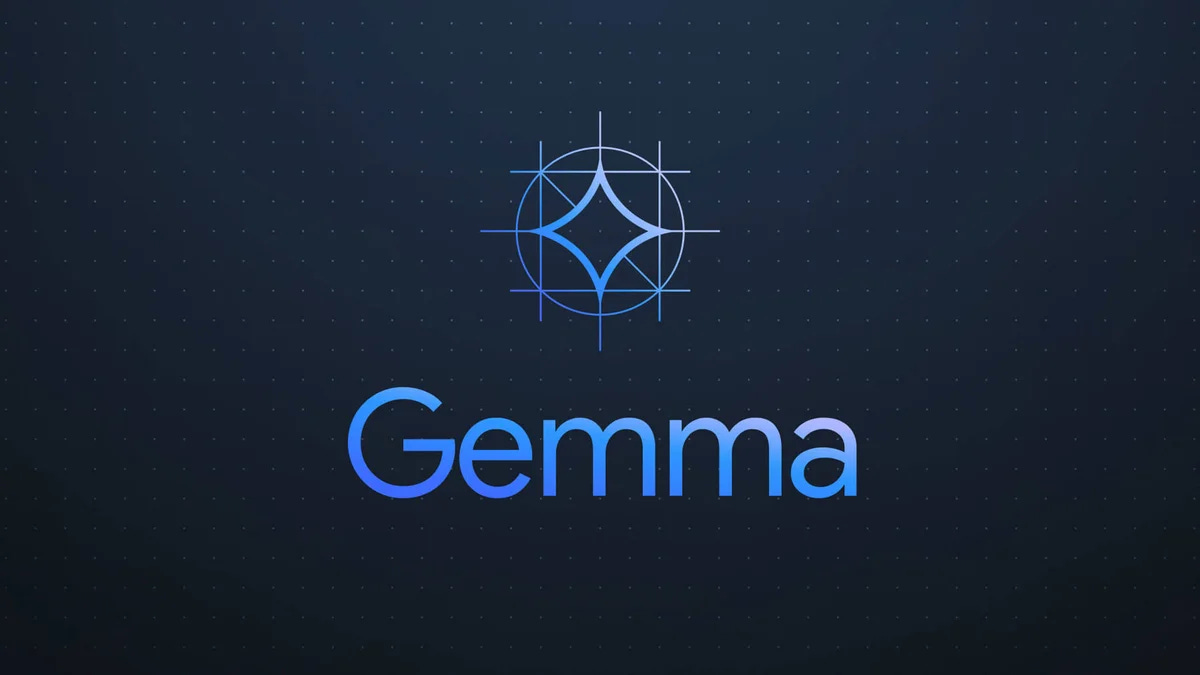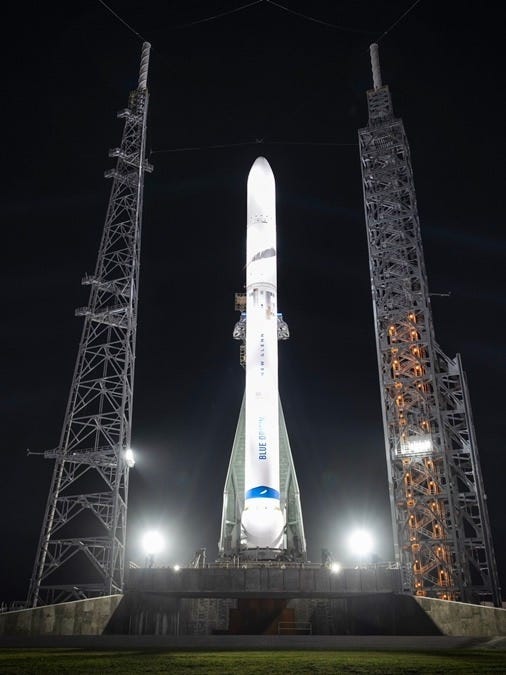

Weekly Dose of Optimism #82
source link: https://www.notboring.co/p/weekly-dose-of-optimism-82
Go to the source link to view the article. You can view the picture content, updated content and better typesetting reading experience. If the link is broken, please click the button below to view the snapshot at that time.

Weekly Dose of Optimism #82
Gemma, MEGA, Space!, Hadrian, Techno-Industrialist Manifesto
Hi friends 👋,
Happy Friday and welcome back to our 82nd Weekly Dose of Optimism. The boys (and gals) were buzzin’ this week. You can feel the energy in the air. That energy was so magnetic that Packy actually booked a flight out to the Gundo to meet with founders and builders this week. I’m sure he’ll have much to share.
But until then, let’s get to it.
Today’s Not Boring is brought to you by…Percent
High yield, income generation, diversification and greater resistance to inflation and volatility — are just some of the factors that have attracted investors to private credit in recent years.
What are they? Private credit are loans which are negotiated privately and are not originated by banks. They can command much higher interest rates and offer largely uncorrelated risk profiles.
Where can you invest? Percent is the only platform exclusively dedicated to private credit, making it available to everyday investors. Accredited investor can get access to:
APY:Average of 18.78% as of January 31, 2024
Low minimums: Invest as little as $500 to start
Welcome bonus: Earn up to a $500 bonus on your first investment
Shorter-term investments: Deals between 6 - 36 months in duration
Income generating: Many deals have recurring cash flow through monthly interest payments over the lifetime of the deal.
Visit Percent to create a free account + a $500 welcome bonus when you sign up today.
(1) Gemma: Introducing new state-of-the-art open models
From Google
Gemma is a family of lightweight, state-of-the-art open models built from the same research and technology used to create the Gemini models. Developed by Google DeepMind and other teams across Google, Gemma is inspired by Gemini, and the name reflects the Latin gemma, meaning “precious stone.”
Weird week for Google!
Last week, it announced its upgraded Gemini 1.5 with longer context windows — 1 million in Gemini 1.5 Pro — and people have used it to do some really mindblowing things, like feed it hours of video and ask very specific questions that it seems to get consistently right, or show it screen recordings and ask it to write code to automate whatever you recorded (like look for an apartment on Zillow). Great!
On the other hand… its image generator absolutely refused to make images of white people. Not great!
In the plus column, Google is joining Meta’s rank in open sourcing versions of its powerful Gemini model. This is a big deal, not only because the technology is now open sourced and available to developers, but also because another major tech company is signaling its views on AI safety. And that view is essentially: open artificial intelligence is safer than closed artificial intelligence. Ironically, OpenAI is now the least open of the big three here (OpenAI, Meta, Google.) There are certainly tradeoffs and companies need to make individual decisions that benefit its stakeholders — and to be clear, Google and Meta are not altruistically open sourcing their AI models — but our view is that freely shared AI is better for the world than closed AI. It increases the pace of innovation and allows developers to identify and patch up potentially dangerous aspects of the technology.
Now of course, both Google and Meta will continue to keep the most advanced technologies under close wraps (and charge customers for it), but tomorrow’s open source model will be more powerful than today’s closed model.
(2) MEGA-CRISPR tool gives a power boost to cancer-fighting cells
Sara Reardon for Nature
Now, a CRISPR-based system that targets a cell’s short-lived messenger RNA instead of DNA could provide a more precise and reversible way of designing cell therapies — and even help scientists to discover how different genes work together.
Another week, another big story in gene editing.
A new CRISPR methodology called MEGA uses Cas13d edits RNA instead of DNA, which reduces the risk of permanent genetic changes. Editing RNA means MEGA can make temporary adjustments to cell behavior, instead of long-term genetic mutations. MEGA’s approach is particularly beneficial for rejuvenating exhausted CAR T cells in cancer therapy, enhancing their effectiveness against tumors. We’re still only working with models and mice here, but MEGA’s combination of reversibility and controllability could lead to safer and more efficient gene therapies in the not-so-distant future.
(3) SPACE!
A massive week in space. There are four big stories that are caught our attention:
Varda Comes Home: On Wednesday, Varda’s W-1 Mission re-entry capsule touched down in Utah.
Moon Landing: Intuitive Machine’s spacecraft made a lunar landing yesterday, becoming the first privately built spacecraft to do so. It was also the first American vehicle to land on the moon in more than 50 years.
Glenn’s New Erection: Blue Origin’s New Glenn vehicle successfully rolled out and upended today for the first time on the pad at Launch Complex 36 (LC-36).
Disney Space CEO: Former Disney star is now the CEO of a Founders Fund/a16z backed space data company. How often do we get to share articles from E! News? This was the cross-over we didn’t know we needed.
(4) Hadrian Series B
As a result of this effort, which was completed last December, the company closed a $117 million Series B. With the new funding, Power is aiming to double the automation and software team in order to improve the automation processes and meet new customer demand.
With all of this space action, we’re going to need more rocket manufacturing capacity and automation. Thankfully, Hadrian just secured an additional $117M in Series B funding to scale out its footprint and to meet booming customer demand. As a reminder, Hadrian automates high-precision CNC machining processes in aerospace and defense manufacturing, aiming to significantly improve efficiency and scalability through software and robotics.
Almost two years ago, Not Boring covered what Hadrian was up to in Hadrian: Ex Machina Ad Lunam. At the time, the company had recently closed its $90M Series A and in the subsequent months has established itself as one of the leading techno-industrial startups in the country. Now, it’s looking to grow its software and automation teams and expand its factory footprint.
If you have 30 minutes this weekend, watch John Coogan’s documentary on Hadrian and get inspired to build things.
(5) A Techno-Industrialist Manifesto
Aaron Slodov for Pirate Wires
The most valuable thing to pursue is also the hardest; rebuilding a modernized US industrial base will take trillions of dollars, but will also extend our prosperity and abundance into the next millennium.
American Dynamism. Hard Startups. Bits and Atoms. Techno-Industrials. Gundo.
Whatever you want to call it, it’s a movement.
Technologists and startup founders are increasingly working on hard/hardware projects that could — if successful— have a meaningful impact on the physical world that we live in. Aaron Slodov, founder of Atomic Industries, tries to capture this movement in his recent essay for Pirate Wires.
Slodov advocates for revitalizing the U.S. manufacturing sector through technological innovation, arguing that manufacturing is crucial for sustained economic growth and national security. This revitalization will require the integration of best-in-class software into a new, modernized industrial base. And it will require our country’s best and brightest shifting their focus from churning out software towards building out our country’s industrial base.
The last 40 years of technological progress has left many of our nation’s best and brightest incomprehensibly rich. Just think how many software founders have made over $100M in the last decade alone. That’s awesome and good for them. But now it’s time for those folks to re-invest their talents and learnings into building back our country.
If you have some time this weekend, check out Percent.
We’ll be back in your inbox on Tuesday.
Thanks for reading,
Dan + Packy
Recommend
About Joyk
Aggregate valuable and interesting links.
Joyk means Joy of geeK




